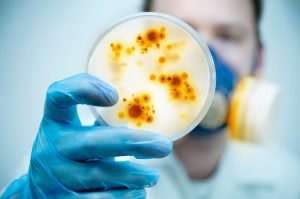 We often think of bacterial infections as being singular organisms that work alone to produce health-related issues. This thinking makes the lives of medical professionals much easier, as having only one problem usually only requires one solution, and in the realm of infections, this usually means prescribing the most effective antibiotic. However, a new investigation into infectious disease has identified two bacteria that essentially work together, with the presence of one exacerbating the infectious potential of the other.
We often think of bacterial infections as being singular organisms that work alone to produce health-related issues. This thinking makes the lives of medical professionals much easier, as having only one problem usually only requires one solution, and in the realm of infections, this usually means prescribing the most effective antibiotic. However, a new investigation into infectious disease has identified two bacteria that essentially work together, with the presence of one exacerbating the infectious potential of the other.
The infectious disease being studied is called brucellosis and is caused by the bacteria Brucella. This bacterium may be transmitted to farm workers or consumers of unpasteurized dairy products, as the bacteria is commonly found in livestock. It can be easily spread and hard to detect, making the illness quite troublesome to manage and dangerous—Brucella species are considered potential bioterror weapons. But a new innovative method for studying the organism has been developed by investigators at Beth Israel Deaconess Medical Center (BIDMC), which is where they discovered this complimentary interaction with another bacterium named legionella.
Advertisement
“Legionella provided all the factors Brucella needs for infection. It was completely out of the blue. It highlights that pathogens can interact in unexpected ways. The whole is greater than the sum of its parts,” said James Kirby, director of the Clinical Microbiology Laboratory at BIDMC and associate professor of pathology at Harvard Medical School.
Brucella is capable of infecting humans and is commonly found in goats, sheep, cattle, pigs, and dogs. It is an organism that is classified as a biothreat, and it’s heavily managed when being studied. In order to keep a possible breach of the bacteria an impossibility, the researchers used a species of Brucella (B. neotomae) that only infected rodents for their study. It is not only safer to handle, but it has enough in common with its more dangerous relatives to serve as a basis for investigation.
This interaction between Brucella and Legionella was unprecedented to the researchers, as the type of Brucella they chose lacked the physical structure needed to become infectious. However, when legionella was introduced, Brucella thrived.
The researchers involved in this study and many others are attempting to discover the reasons why certain strains of bacteria become resistant to antibiotics over time and develop new antimicrobials. This knowledge of co-infection could introduce new problems not previously thought of.
